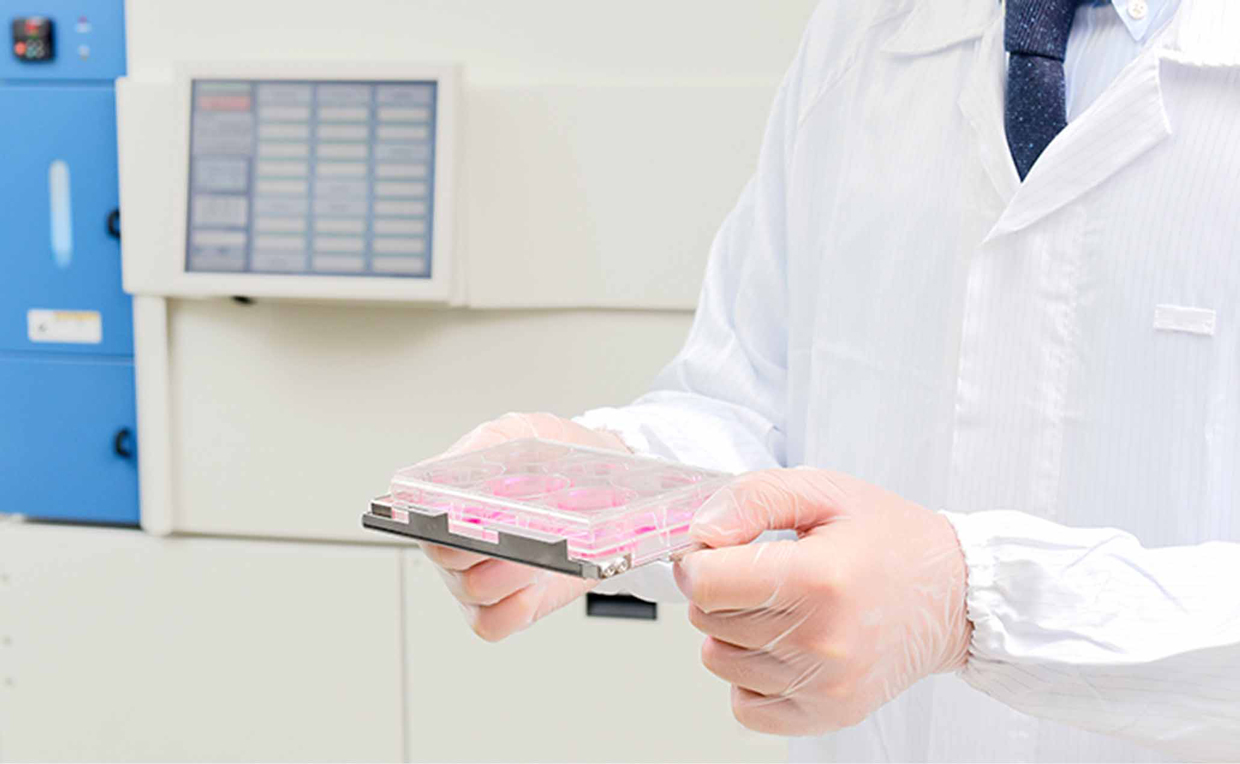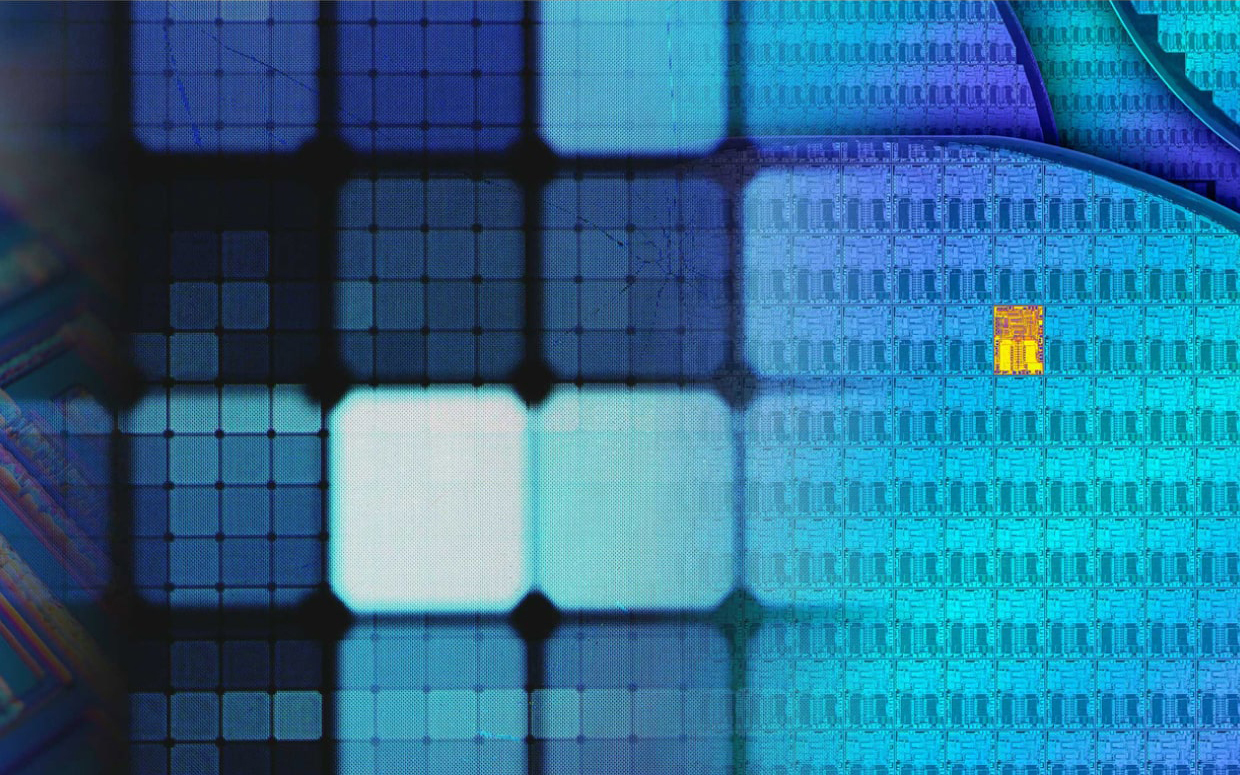Revealing the mysteries of the brain

Realizing live cell observations with twice the
resolution of conventional optical microscopes
Nikon's N-SIM Super Resolution Microscope series enables live cell observations with twice the resolution of conventional optical microscopes, which supports biological science and medical research.
Moving far beyond the conventional resolution limit
The brain manages all human activities and is the center of consciousness and the mind. It is said that how far we can understand the brain is one of the greatest research challenges in present-day science. The brain is still a mystery, but the progress of research has potential for facilitating investigations in biological science, medical and even artificial intelligence fields.
In order to unveil its secrets, it is essential to have a tool that can observe brain neurons exactly as they are, and in as much detail as possible. However, general optical microscopes are limited to a resolution of approximately 200nm (nanometer: one millionth of a mm). Electron microscopes can achieve higher resolutions, but specimens must be kept in a vacuum during observation, which makes live cell observation impossible. Therefore, Nikon's N-SIM Super Resolution Microscope series is very highly valued.
N-SIM series microscopes combine an innovative imaging method of structured illumination microscopy*1 with Nikon's highly advanced optical technology, to realize capture of images at twice the resolution of conventional optical microscopes (lateral resolution 115nm*2).
- *1Imaging method that records moiré produced by overlay of a stripe illumination pattern (structured illumination) on a specimen, and reconstructs the minute structure of a specimen by analytical processing.
- *2These are half-intensity width values using 100nm-diameter beads excited at 488nm with 3D-SIM mode. With TIRF-SIM mode, 86nm is achieved using 40nm-diameter beads excited by a 488nm laser.

Accelerating our understanding of synapses, and supporting the advance of neuroscience
Live cell observation using the N-SIM Super Resolution Microscope series has added much valuable knowledge to the neuroscience field.
One example of this is our understanding of synapses. A synapse is the connecting section of a neuron to the adjacent neuron, and the core of information transfer in the human body. Visualizing its structure and understanding its characteristics will lead to unveiling how the brain works.
For a long time, synapses had been thought to be stable and rarely changing their structure after formation. However, through observation using N-SIM, it was found that abnormalities occur in synapses. Also, it is becoming clear that such abnormalities relate to diseases like Alzheimer's, autism, schizophrenia and bipolar disorder.
This is expected to lead to the development of new drugs that might cure these medical conditions by providing further analysis based on the detailed data of synapse structure obtained by N-SIM.

Photo courtesy of: Shigeo Okabe, MD, PhD, Graduate School of Science, The University of Tokyo
Realizes high-speed imaging at a maximum of 15 fps with super resolution
Nikon has developed a novel high-speed, structured illumination system using innovative technology for switching illuminating patterns with high speed and precision. The latest model N-SIM S realizes high-speed, super-resolution imaging*3 at a maximum of 15 fps (frames per second). Since high-speed, time-lapse super-resolution imaging can be obtained, more dynamic changes in cells can be observed.
Nikon's N-SIM Super Resolution Microscope series supports the development of medical and biological sciences. While continuing to evolve, Nikon contributes to improving the quality of life worldwide.
- *3When exposing 512x512 pixels with 2D-SIM mode for 2 msec.
Image acquisition speed: 6 fps
Imaging mode: 3D-SIM
Image courtesy of: Yasushi Okada, M.D., Ph.D., The University of Tokyo
Making real what others think impossible


Optical Engineering Division
Norio Miyake
I was in charge of illuminating optical design which is the core of N-SIM S. The way the light approaches changes the appearance of the specimen completely. Compared to an imaging optical system like that of traditional cameras, there are few clear evaluation indices and not much accumulated knowledge for the illuminating system of structured illumination microscopy. Therefore, development started without a clear roadmap. However, the flexibility is high and the capacity that engineers can devise during the design process provides for real satisfaction.
N-SIM S permits live cell imaging, and observation of biological phenomena which cannot be observed with conventional microscopes, such as cell reactions immediately after a drug is administrated. As a designer involved in the development, I would like to create products that enable us to do what was impossible before, and contribute to society in many useful ways.

Healthcare Business Unit
Daisuke Ohara
For the N-SIM S project, I was leader of the development team while taking charge of the mechanical design. Even though there were many developers involved in this project for optical design, mechanical design, electronic design and algorithms, sharing problem awareness and cooperation went extremely smoothly. When any problem emerged, the team united as one and tackled it together. I believe that this great attitude led us to the success of the N-SIM project.
There is a Latin phrase "in vivo veritas (there is truth in the living body)". The mission of biological microscopes is to contribute to the pursuit of the truth in a living body.
I would like to aim for the development of microscopes that can observe the phenomena occurring inside a living body exactly as they happen. I would like to always be aware of continuing the challenge to transform what is considered unrealizable into reality through unique ideas.

Healthcare Business Unit
Wataru Watanabe
I was involved in designing the electronic circuitry of the laser unit which is the light source for N-SIM S. At first, there were many problems, for example, the visualizing speed could not achieve a logical value, and new obstacles arose just before the product release. Despite this, every time problems occurred, team members in different fields contributed effective ideas and solved each and every issue. I felt great fulfilment in this process and I've learned a lot from listening to various stories from fields other than electronic, such as optics and algorithms.
The electronic devices used in electronic design evolve every day, and high-performance products are being created one after another. Utilizing them, I constantly refine my technique and would like to develop affordable products that will become very beneficial to more and more people everywhere.
- *Job title and responsibilities at time of interview.
Originally published: April 2, 2019.





